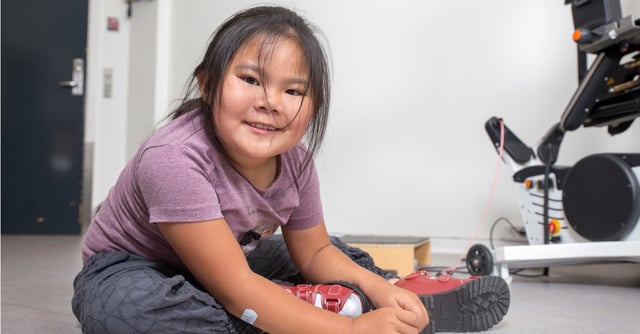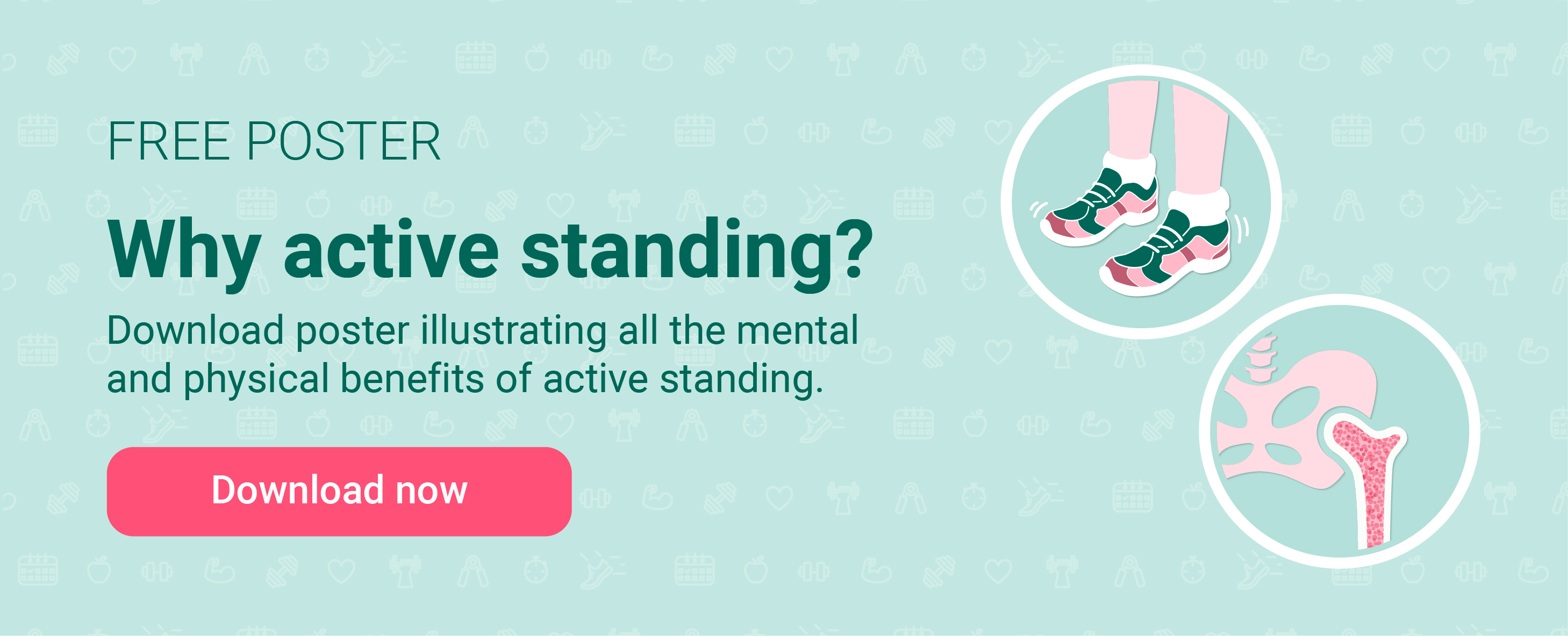
Sep 18, 2020What is Spinal Muscular Atrophy (SMA)?

Back to Blog Overview
Spinal muscular atrophy (SMA) is a genetic disorder characterized by muscle weakness and muscles wasting away (atrophy), which affects the ability to move. Within SMA there is a wide variability in age of onset, symptoms, and severity of the disease.
- What is the cause of spinal muscular atrophy?
- What are the symptoms of SMA?
- What is the life expectancy?
- Is SMA curable?
- SMA organisations
What is the cause of spinal muscular atrophy?
The gene affected in SMA is the “survival motor neuron” gene (SMN1). A healthy SMN1 gene produces a specific kind of protein which is needed to maintain the health and normal function of motor neurons. Motor neurons are the nerves that send signals to the muscles from the brain. A child with SMA has a defect on the SMN1 gene which causes limited protein production. As a result the nerves break down and can’t send signals to the muscles. The muscles cannot move and will become smaller.
Since SMA is a disease passed down through families, both parents (in most cases) carry the defect SMN1 gene for a child to have the condition. If a child only gets a broken SMN1 gene from one parent, the child will most likely not get SMA but can be a carrier of the disease.
SMA affects 1 per 8.000 to 10.000 people worldwide.
What are the symptoms of SMA?
The symptoms of SMA vary from mild to severe. The primary symptom is weakness of the voluntary muscles, and it seems like the muscles closest to the centre of the body are most affected. These are muscles around the shoulders, hips, tights, and the spine. Lower limbs are also more affected than upper limbs.
Severity of SMA
The severity of SMA is classified into four different types:
Type I - often also called Werdnig-Hoffmann disease. This is the most common and the most severe form of the condition. Already at birth, or after a few months, low muscle tone is observed. Your child will most likely not be able to control head movements or sit unassisted. Swallowing problems may occur and can lead to difficulties when feeding and thereby poor growth. Also, the respiratory system might be affected due to weakness of respiratory muscles.
Type II - often also called Dubowitz disease. Symptoms of muscle weakness usually develop between the age of 6 and 12 months. At this level your child will be able to sit independently but cannot stand or walk unaided. As muscle weakness worsens with age the child's motor function might be affected later in life. The child is at risk of developing scoliosis (spine that curves) and the respiratory muscle may also be affected.
Type III - often also called Kugelberg-Welander disease. Symptoms of muscle weakness appear after early childhood. Your child will at this level be able to stand and walk unaided, but some reduction in motor function might occur over time. For example walking and climbing stairs may become increasingly difficult.
Type IV - is very rare. Symptoms begin in early adulthood and often appear as mild to moderate muscle weakness, tremors, and mild breathing problems.
What is the life expectancy?
Life expectancy varies in relation to the type of SMA. Children with type I, the most severe type of SMA, have the lowest life expectancy. When that is said, life expectancy and quality of life have also for these children changed dramatically due to improvements in SMA medication.
For people with SMA II, life expectancy is reduced, but most of them live well into adulthood.
Life expectancy is normal or near normal for people with SMA III and IV.
Still, people with SMA are never exactly alike and therefore it can be difficult to know what to expect for the future.
Is SMA curable?
Unfortunately, there is no cure for SMA, but new medicines used in the treatment of SMA can help increase life expectancy, improve muscle control, and provide increased quality of life.
Some of the most important types of medicines that are available include:
- Nusinersen (Spinraza) was the first medicine to be approved. If you have SMA, you don't produce enough SMN protein due to a mutated or missing SMN1 gene. The SMN2 gene also produces protein, but not enough to make all the body’s muscles work. Treatment with Spinraza increases the SMN protein production and helps muscles to work better. In this easy-to-understand video, you can see Emma, a 7-year-old girl with SMA, explain how Spinraza works.
- Onasemnogene abeparvovec-xioi (Zolgensma) is a gene therapy that replace the function of a missing or nonworking SMN1 gene. The gene is essential for production of SMN protein. Zolgensma is administered as a one-time intravenous infusion and is used to treat children less than 2 years old, diagnosed with SMA1. The treatement has shown clinically meaningful improvements in muscle function. Watch this video to learn more about Zolgensma.
- Evrysdi (Risdiplam) is a medicine that targets the back up survival motor neuro 2 (SMN2) gene to produce more SMN protein. Risdiplam is taken orally or through a feeding tube once a day and has been shown to improve muscle control and increase life expectancy for people with SMA. This medication can be used by adults, children and infants from two months of age. Read more about Risdiplam here.
Other treatments and support involve different healthcare professionals managing symptoms of SMA and ensuring best possible quality of life. This can be:
Movement
A physiotherapist and/or an occupational therapist will follow up your child regularly to stimulate motor development and skills. The therapist will customise a program that fits your child's age and functional level and help you find postural support equipment and assistive devices to aid your child and you as a caregiver in the best possible way. The aim of using assistive equipment is to allow your child for independence and mobility despite motor disability. A therapist may also together with a doctor follow up the child's development of bone deformities. Children with SMA are at risk of developing a curvature of the spine and a spinal brace is often needed.
Breathing
Because of weak muscles, children with SMA are especially prone to having difficulty breathing. Your child might need some type of breathing support, and healthcare professionals will determine if and which type.
Swallowing and nutrition
Weak muscles in the mouth and throat might affect the child's ability to swallow, which can have an influence on the child’s growth. A dietitian will guide you on good nutrition, and sometimes a feeding tube is needed.
SMA organisations
You as a family might benefit from meeting other families who have children with SMA. Such organisations can help you with information about SMA, the type of support you can expect, and often also offer meeting points for parents, families, or siblings. These organisations usually have good knowledge about the newest treatments and ongoing research.
Examples of organisations:
- Europe - SMA Europe
- USA - SMA foundation, Cure SMA
First published: Apr 5, 2018 9:31 AM. Updated March 8, 2023.

Rikke Damkjær Moen brings many years of experience as clinical physiotherapist to the Made for Movement team. Her mission is to ensure that everybody, regardless of mobility problems, should be able to experience the joy and health benefits of physical activity. As our Medical Manager, Rikke is passionate about sharing knowledge so that individuals with special needs, families, and clinicians can discover the possibilities and solutions provided by Made for Movement.


